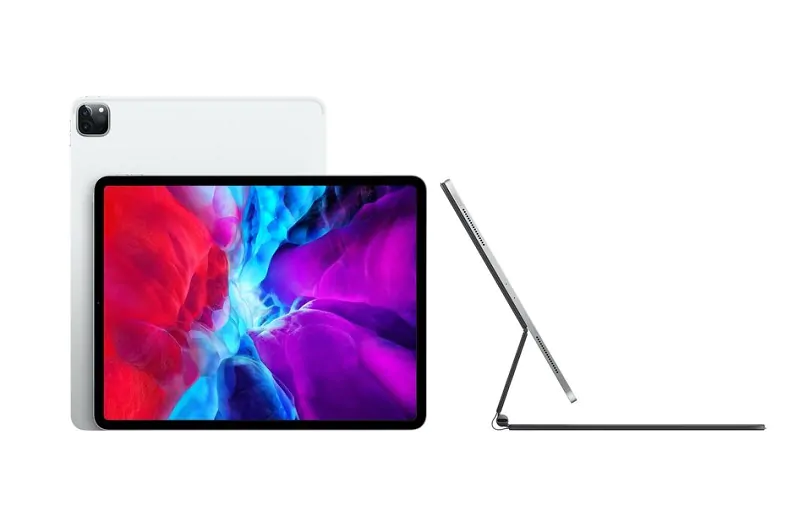Running Cross-Channel Promotions Using Reusable Content Modules

As customers communicate and connect with brands on various levels website, app, email, social media marketer’s consistency challenge continues. With cross-channel promotions, brands are automatically given more exposure; however, other challenges arise for content creation as a unified approach is necessary. Enter reusable content modules. This system allows teams to construct and repurpose content across all teams and channels as a Headless CMS structure supports access, collaboration, and expedited response to content creation across the board. Reusable modules ensure that no matter what promotion or approach a consumer sees, it’s all uniform communication sent from the brand and marketers have the tools to act with little time to spare.
The Role of Cross-Channel Promotions in Modern Marketing
Cross-channel promotions are the future of marketing. Customers do not experience brands on one channel; they travel between multiple touchpoints to engage with offerings across the buying journey. A client may see a social media ad, land on the website for more information, get a follow-up email, and purchase an item through an app. Thus, as a marketer, you need to ensure this experience feels like one cohesive entity. React dynamic component architecture supports this by enabling reusable content modules to adapt seamlessly across platforms while maintaining consistent design and functionality. An overarching campaign should tell the same story with a consistent tone, message and visual identity across all channels. That’s where reusable content modules come into play. Reusable content modules are pre-planned, componentized assets that can translate to any campaign and channel.
What Are Reusable Content Modules?
Reusable content modules are structured components of a campaign banners, product cards, CTAs, testimonials and promotional blurbs that can be mixed and matched and customized to fit any channel or campaign.
Instead of starting from scratch every time you create an asset, consider reusable content modules building blocks of sorts that can be rearranged to create cohesive promotion experiences. Each module has pre-defined pieces (text, visual assets, metadata) to ensure consistency, but it can be customized across platforms. For example, a “sale banner” module can be a large hero image in web form but automatically reformats in size and style for mobile and email. This modular approach allows marketers to focus less on production bottlenecks and more on creativity and strategy.
How a Headless CMS Supports Reusable Content Modules at Scale
A Headless CMS is the best way to manage reusable content modules to ensure a consistent approach across platforms and campaigns. Unlike traditional CMS systems that tether the content to specific templates, a Headless CMS allows users to access and store content in an organized manner that’s relative to the specific module, nothing more, nothing less.
Therefore, through APIs, a Headless CMS can deliver the same exact content module across multiple platforms (website, apps, email distributions, even digital billboards) without hesitation or lag time. The decoupled architecture allows for simultaneous launches on multi-channel promotional campaigns without redundancy. Therefore, when a module is updated in all touch points from a new offer to new imagery it automatically happens everywhere. This is a time saver for anyone with multi-faceted campaigns who wants to ensure brand connection and correctness at all levels.
Establishing a Modular Library of Resources
The best way for marketers to facilitate cross-channel promotions is to establish a library of modular resources. A centralized system creates a brand’s content universe where all assets that can be assembled for a given campaign or impulse are licensed and flexible.
For example, marketers can create modules out of common elements like headers, product grids, event countdowns, or CTAs. At the same time, designers and developers establish the functionality and visibility of these modules across various devices and responsive capabilities. Once the library is established, the ability to launch campaigns exponentially increases by curating existing modules rather than developing from scratch.
Increased Team Collaboration
Other channels and systems rely on cross-functional teams marketing, design, development, localization; however, without a modular system, fragmentation delays progress. Instead, Headless Content Management Systems promote reusable content modules.
Marketers can make their own sections and arrange them independently; designers can place emphasis on aesthetics while relying on their development team to improve performance without the need for constant compromises. When everything is created in the same universe, but only where specific teams boast their strengths, nothing exists in a silo. Module updates happen in real-time across channels without unnecessary duplication, reduction of friction, and reliance on all teams getting to the same formatting goal and promotional purpose.
Personalized Promotions Without the Labor
Cross-channel construction relies heavily on personalization; however, automatically tailoring promotions on a channel-by-channel basis requires more resources than most teams have available.
With reusable content modules combining structured fields with customer data, this customization becomes seamless. Through API integrations with CRMs or analytics tools, marketers can use dynamic data to edit fields based upon audience, location or behavior.
For example, a single promotional module can boast one collection of images for first-time visitors of a website but another for “loyalty program” customers using the same existing module. Thus, personalization scales without the labor of creating individual versions of each campaign across different channels.
Overcoming Brand Consistency Across Channels
One of the biggest threats to brand consistency in cross-channel marketing is the potential to stray from tone, visuals, or messaging when content is produced and posted on multiple systems. Reusable content modules prevent this disconnectedness by creating controlled, pre-defined templates that exist within brand parameters.
Since these modules come from a centralized source the Headless CMS approval means they adhere to approved brand fonts, colors, styles and more. Thus, if the same campaign is run via email, website and app, the consumer doesn’t skip a beat with a different brand voice in one of the channels. Consistency breeds recognition, trust and professionalism, which fosters long-term brand loyalty.
Reducing Time-to-Market for Special Promotions
In industries where timing is everything and the best opportunity may be on a flash-sale time constraint, time-to-market makes or breaks success. Whether it’s seasonal campaigns or current-event promotions, the need for speed is crucial. Reusable content modules help facilitate this by ensuring all teams aren’t starting from scratch.
Marketers no longer have to build landing pages, social ads and email templates completely from the ground up; instead, with minutes of work using already-existing modules, time can be saved and productivity can be shared across teams. A Headless CMS further supports this time-savings; when changes in content and pricing are made, APIs can move this information across all platforms immediately. Thus, when market shifts occur or competitor communications need to be responded to rapidly, marketing teams are there to save the day.
Continued Testing for Campaign Optimization
While any testing is better than none, campaigns that are launched across multiple channels benefit from continued testing and optimization once live. With reusable modules, A/B testing between channels is easy. Marketers can see how channels access the same campaigns and assess which headlines, visuals and CTAs perform best.
If a red button module gets more conversions than a blue button module, the red button can be updated in the reusable library across the board instead of teams having to constantly create their own versions. Thus, not only do campaigns launch faster thanks to their similar modules and marketing cuts down on excessive creation, but they also continue to improve over time, boosting ROI and engagement.
Global Campaigns Made Easy
For global brands, localized campaigns can become a logistical nightmare. Reusable modules transform this idea into a reality where a globalized template becomes a regionalized tool. Coupled with translation and localization capabilities, the same module can appear with different language options, currencies or regionally appropriate images that all still maintain their designed appearance.
This easy globalized approach to branded content also simplifies global marketing operations so that everything going to market is regionally and culturally appropriate without the need for separate designs efforts. As brands grow, the best way to scale content is through modular means that are automatically scalable across different regions and nations.
Automating Campaigns
Finally, the third component that transforms modular content from efficient to intelligent is automation. When a Headless CMS syncs with marketing automation, brands can automatically deploy campaigns, make relevant updates and retire campaigns without ever having to lay eyes on a single instance.
For example, a limited-time offer can be automatically scheduled to run (and shut off) without anyone having to go in and edit. Automatic context can also occur, meaning an offer can be updated depending on availability or customer behavior. When collaborating with reusable content modules, this ensures that across every channel, campaigns can run as necessary without having to rely on human interaction.
Measuring the Results Across Channels
Cross-channel campaigns work best when measurements are also unified. A Headless CMS easily integrates with analytics tools that allow marketers to assess performance based on engagement, conversion and impression levels.
Because reusable modules are defined, reporting from each instance can happen under one umbrella for accurately aggregated insights. Teams can assess which offers/messages/visuals worked best on particular channels for best performance. Without measuring success for guesswork, data-driven insights become easier to forecast and achieve within the marketing ecosystem.
Future-Proofing Your Cross-Channel Marketing Strategy
Digital channels change from new social opportunities to devices and media. The Headless CMS approach fosters future-proofing alignment as it creates modules for organizations that can keep them agnostic of changing technology. New channels can be developed via appropriate APIs or existing modules redeployed to a different location without having to reinvent the wheel regarding the entire campaign.
This means that your organization will be ready for the next big thing. Will it be a new voice assistant through which you send promotions? Will it be augmented reality or additional devices connected to your customers’ homes? Reusable content modules form the basis for what can quickly transform and retain effectiveness regardless of how marketing evolves.
Facilitating Creativity Without Compromising Quality or Turnaround Time
There’s no middle ground between creativity and speed when marketing operations thrive under pressure. Reusable content modules for cross-channel campaigns put that notion to rest. They encourage teams to engage with creative content at their hearts as inventive endeavors can still fall within approved brand guidelines.
Through customizable content outposts, the modules can fit what the teams are looking to do for their campaign while remaining consistent with other modular guidelines. As such, there’s immediate access to creative contributions without the time wasted developing new materials and sacrificing branded equity.
This means that campaigns that should be bold and creative can be launched in time-sensitive situations or without precision-strategized adjustments. Reusable content does not trap creative developments; it speeds them up and gives teams the freedom to ideate, produce and roll out campaigns yesterday.
Improving Communication and Cohesion Between Global HQ and Regional Teams
Global organizations often struggle with cross-channel campaigns due to geographical challenges between HQ/global marketing teams and regional branches. However, reusable content modules have created ecosystems where everyone can work collaboratively and effectively from their respective locations.
Global marketing teams can create a cohesive, collaborative, branded module for promotions that regional teams merely have to adjust with minor changes. Language, cultural implications, market offerings and changes from global adjustments will create relevant transformations appealing to local audiences.
Despite international differences, the guidelines keep everything consistent while giving those local marketers a space for creative freedom. Any changes made at the global level will automatically flow through regions via the Headless CMS, maintaining effective standardized approaches to content. This speeds up cohesion and communication efforts while eliminating overlap across markets.
Modular Content as a Sustainable Marketing Advantage
Unlike an average campaign effort which runs its course and is relegated to the past, modules are sustainable components that continue to serve marketing teams into the future. Each module a product highlight, a section for testimonials, or a promotional banner transforms into a tool for a lifetime, easily editable, rearrangeable, and reusable for future efforts.
As modular thinking becomes second nature, content becomes like a library of internalized building blocks. Marketers cultivate a collection of effective, previously vetted moving parts which they can assemble without wasting time or resources for new campaigns. Therefore, output continuously improves with each effort as a recycled content project no longer becomes a frivolous expense but instead a scalable, sustainable marketing advantage that compounds value year after year.
Create greater webs of content faster and faster that would otherwise take time if they were unique and one-time content elements. Instead, sustainability means that marketers know their efforts will build on one another instead of starting from scratch.





